Arctic Cat mountain riders have seen some notable upgrades in recent years, as the company has dialed in its M-series sleds with alterations to the front suspension, skid frame, ergonomics, drivetrain and more. While these tweaks were being introduced, though, a much bigger jump in technology was under development in the background.
For 2019, Arctic Cat is launching its big salvo – and breaking some snowmobiling norms in the process – with its revolutionary, single-rail Alpha One rear suspension found exclusively on M 8000 Arctic Cat Alpha One models with either a 154- or 165-inch track.
While simple, single-rail suspensions did exist in the distant past, this is the first modern single-rail design, and the only one ever created specifically with deep-snow powder riding in mind. Like most snowmobile manufacturer creations, many people were involved in the development process, but the initial concept started inside the brain of Andy Beavis, who is also now Cat’s mountain product manager and the one who led the team effort to bring the Alpha One to market.
SG: Where did the initial concept for the Alpha One rear suspension come from?
ANDY BEAVIS: “The main idea actually originated when we were doing the ZR 120 [youth snowmobile]. The first year we had a fiberglass leaf spring on it that took the place of a suspension arm, and it allowed the track to flex and contour with the ground. Meanwhile, everything in the mountain segment for years has been going narrower – with narrower front ends, two wheels in the back instead of four, etc. I always thought, ‘What if we just narrowed the [skid frame] up to the point where we only had one rail?’ There were a couple of reasons for that: First, it would allow the track to flex, contour and get traction at greater angles of lean than we have had in the past. It also would allow us to take the twin-rail design and make one rail that had more stiffness in a hollowed-out box section. It would get rid of all of the cutouts, complexity and other things that we do to try to make the twin-rail skid light. Now, it’s really light and strong, and it’s clean so it doesn’t hold snow; that’s something else we worked on for a long time – weight. It keeps all of that snow out of the skid frame. We gained a lot of floatation in deep, dry mountain snow.”
SG: At what point was it transitioning from a theory to designs and prototypes?
BEAVIS: “In 2012 we built a prototype in the shop. That was kind of a proof-of-concept to prove that it would work, it would guide the track and the track wouldn’t do anything funny. We tested that vehicle in secret for probably three years before we took it to the next level. We had a lot of other projects in the hopper, with all of the things that we have done in recent years [on the Mountain Cat line], from the front end changes, twin-rail suspension changes, the new engine, new Ascender bodywork and all of those things. So, it took a while to fit the concept into the production plan.”
SG: Did those early, hand-built prototypes work pretty well, even before you developed a track for this system?
BEAVIS: “They did actually. When we originally concepted this design, we had to file a patent before we showed it or talked to anybody about it, including [track manufacturer] Camso. But even before that, to do development, we had to get tracks to test with. So when we ordered tracks we just told them, ‘We don’t want any windows or any clips on them,’ and then we built the tooling in-house to punch out the track for the new center clipping. The first three years we ran with those in-house modified tracks. The trouble was once we were going toward production, Camso showed us how the existing production tracks weren’t configured properly for the clips to clip the rubber without hurting the paddle, so we had to do a new track mold design anyway. That’s where we went from using a modified 3-inch [pitch] Powerclaw to making the new 3.5-inch pitch. Through development with the longer pitch and the way we were center-clipping the track and putting all of the load in the center of the rail, we were working hand-in-hand with Camso to run stiffer rods and different rubber durometers to really make the track act as much like the Powerclaw as we could and yet try to gain more flotation and make everything work with the new center rail.”
SG: When determining the rear suspension geometry, did your team begin with the geometry of the twin-arm design or start from scratch?
BEAVIS: “Originally when we built the first prototypes we wanted to prove the single rail idea on its own so initially all the geometry – the shock lengths, the arm lengths and linkages in a side view – were kept the same as the twin rail. We found that we were able to get more flotation and more traction. After we proved that, then we went back and changed things even further. We have a more progressive shock stroke, we changed the pull rod and idler arm lengths, but we kept the same spacing between the arm mounting points so it would fit our chassis and would be interchangeable.”
SG: Why was the rail designed as a combination of aluminum and magnesium?

BEAVIS: “The initial prototype was all welded aluminum, but going into production we had to think about using the best materials and the best attachment methods to suit the different parts of the suspension. For instance, we’re still using high-strength steel on the lightweight tubular arms, on the rail beam we’re still using extruded aluminum for the main length of the beam, but then that front casting is the magnesium part. By going to cast magnesium, we were able to incorporate the front arm mount, the front shock mount, the limiter strap mount, the idler wheel mounts, and have the front of the rail running the anti-stab wheels, all with that one casting. It was a pretty big investment, and a lot of work went into that casting. It ended up saving probably 1.5 to 2 pounds, and then by using an adhesive we could join the magnesium part efficiently to the aluminum. The other aluminum attachment points – at the back for the rear wheels, the rear arm and the rail brace – those are all attached with adhesive as well, since we were already using it up front.”
SG: If magnesium is a superior material, why not use it in the whole suspension?
BEAVIS: “Magnesium is your lightest structural metal, and there are unique characteristics to working with it: You don’t want to weld it because if you get the temperature hot enough it is flammable, so-to-speak. That’s why there is high-strength steel in the assembly for the arms, there’s extruded aluminum for some of the rail and some of the mounting points, there’s cast aluminum and there’s a cast magnesium. Structurally and for weight and efficiency, looking at the entire assembly, there are places where those different materials make more sense than the others, either for manufacturing or strength-to-weight, for example.”
SG: Why is the actual beam triangular and hollow?
BEAVIS: “The triangular shape evolved as we were looking at all of the different ways that the rail gets loaded and used in the vehicle. Just like normal two-rail designs, the new rail needed more strength vertically than side-to-side, so it would have become kind of a rectangle anyway. We also wanted to take advantage of the fact that we weren’t going to have any holes in the rail or anything to help it shed snow. The combination of being able to shed snow, having the cross-section that we needed, and being able to mount shocks and things close to the rail, it evolved into that triangular shape.”
SG: Why were oversized wheels used in the back and large drivers up front, and how did you settle on a 10-inch rear wheel vs. a 12- or 15-inch wheel?
BEAVIS: “It’s been talked about for years that bigger wheels are more efficient for bending a track. If you have big paddles on a mountain sled, the big paddles have a pretty wide base on them and take more to bend it in a circle. Now, why wouldn’t you go bigger yet? We did a lot of testing on this, and one reason is the track drive in the front of the tunnel can only get so big before it interferes with the core of the machine. At some point there are diminishing returns – we could put on a 20-inch wheel that’s bigger and heavier, but the 10-inch showed good efficiency gains. We’ve seen up to 5 hp on the track dyno. A bigger wheel limits your rear travel because that wheel and the track need room to travel vertically up into the chassis. A bigger wheel can also put more bending load into the rear part of the rail. With the design of the Alpha rail, we were able to get a lot more strength and stiffness into the back of the rail to take that bending load.”
SG: Turning to the track, how did your team end up with a 3-inch paddles and a 3.5-inch pitch?
BEAVIS: “The initial units were done with the 2.6-inch track because the 3-inch wasn’t even tooled up at that time. Then, as the 3-inch Powerclaw track was developed, we ran modified 3-inch tracks for a couple of years. We decided that the focus of the Alpha vehicle was that next step in off-trail and backcountry mountain type riding, sidehilling and maneuvering in deep-snow. A 3.5-inch pitch takes bigger bites of snow but it also has less paddle on the ground, so it’s really a deep-snow track. When you start getting into the conditions where the snow is a little more set-up, or a little warmer snow, the 2.6-inch track is going to be a little better. With the design of the Alpha being focused on off-trail, sidehilling, deep-snow maneuvering, the 3.5-inch pitch made the most sense – it allowed us to take weight out. We modified the paddle design a couple of times after testing and also modified the durometers of the rubber and the internal rods. We saw some performance improvements by stiffening the rods so that center rail can spread the load further out to the edges of the track.”
SG: Now that it’s done, what makes you most proud of the suspension design?
BEAVIS: “We were pretty lucky in that there were some really good conditions for some of the people who got to demo them. But what I am most excited for now is when people get out in October or November in those first big snows, the naysayers are not going to have a lot to say after that. The other thing I’m most excited about is I’ve had a really great team of engineers and designers who have been working with me – it’s a really awesome group of people we have here at Arctic Cat. When they get involved in something like this, they put their heart and soul into it.”
Every issue of Snow Goer magazine includes in-depth sled reports and comparisons, aftermarket gear and accessories reviews, riding destination articles, do-it-yourself repair information, snowmobile technology and more! Subscribe to Snow Goer now to receive issues delivered to your door 6 times per year for a low cost.


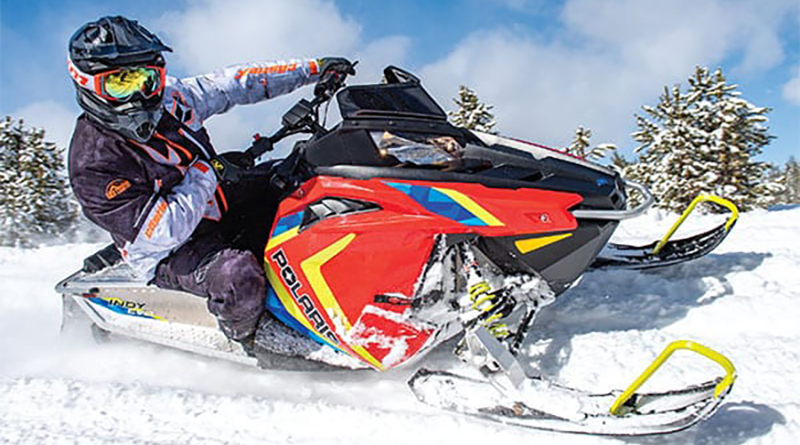
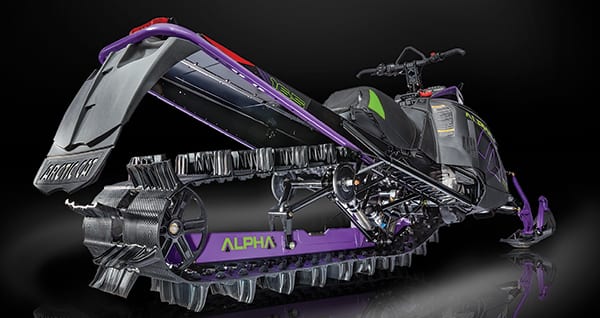
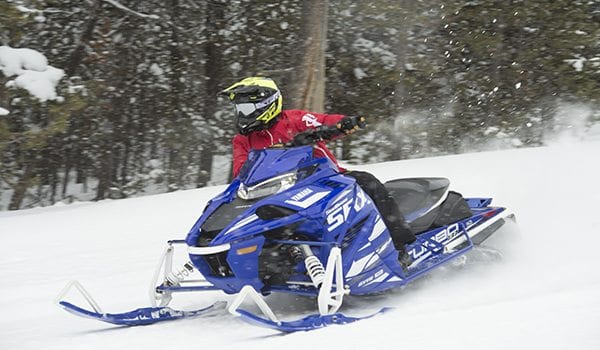
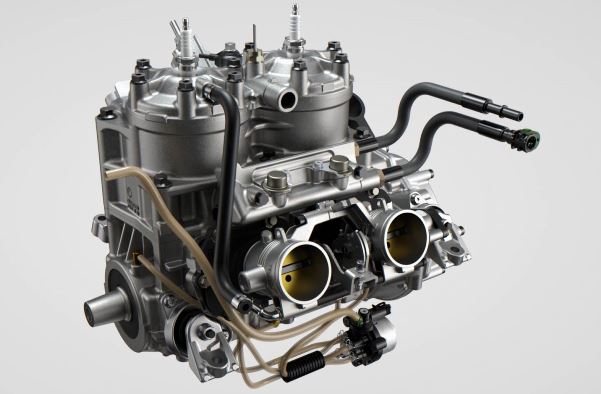
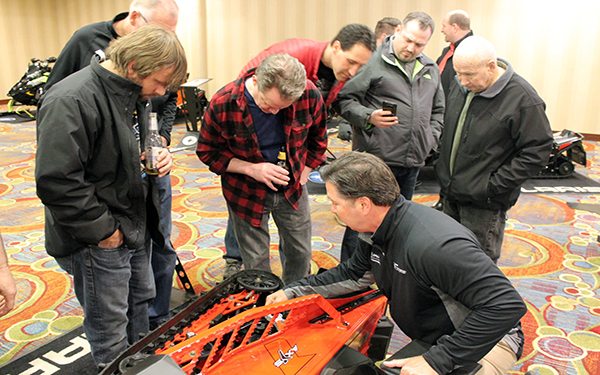
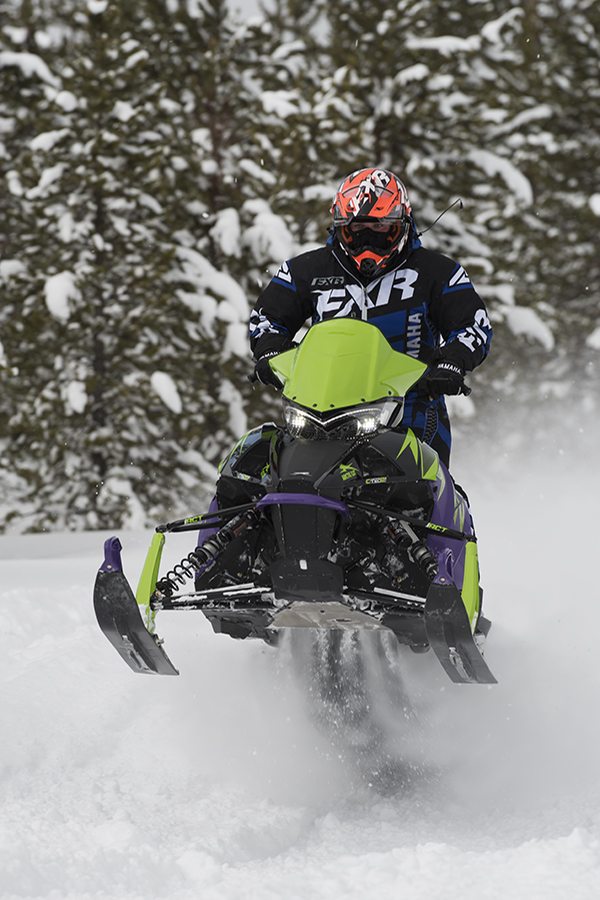
Pingback: Top 10 Snowmobile Stories Of The Decade | SnowGoer